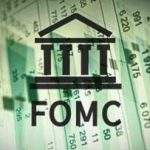At its late September meeting, the Fed announced it would begin selling off the assets it amassed after the financial crash of 2007. The purchase of approximately $4.5 trillion in bonds and other securities was initiated to mitigate the losses incurred during the crash and to keep interest rates near zero. The plan, according to Fed chair Janet Yellen, is to reduce its portfolio slowly, so that it is no more exciting than “watching paint dry.” The Fed’s plan throughout 2017 has been to keep interest rates at a range of 1% to 1.25%, and the Fed intends to maintain this even as it unwinds its portfolio. “The basic message here is that US economic performance has been good,” Yellen stated.
The announcement did not surprise financial watchers, but some experts are urging continued caution with regard to the economy. They point to a number of circumstances that mirror the US economy of 2007 before it crashed: unemployment rates which are the same today as they were in 2007, the raising of interest rates by the American central bank, record-high house prices and stock markets which have hit their highest ever values.
However, other experts are quick to point out that there are significant differences between today’s economy and the one a decade ago. Household incomes are much more in line with the price of houses, suggesting that fewer people are living beyond their means than in 2007. Mortgage rates are also lower, and tightened lending restrictions have made it all but impossible to obtain a mortgage for those who are at risk of defaulting.
According to Yellen, the Fed could still do an about-face, should the economy take a turn for the worse, something that some experts believe is not out of the question. JP Morgan Funds’ chief global strategist, David Kelly stated his belief that Yellen’s optimism about the bounce-back of the US economy might be misplaced. He thinks that the when the reduction in the Fed’s balance sheet mixes with rising interest rates, the combination will have an adverse effect. Said Kelly, “[It] will very likely push long-term interest rates higher over the next few years.”




